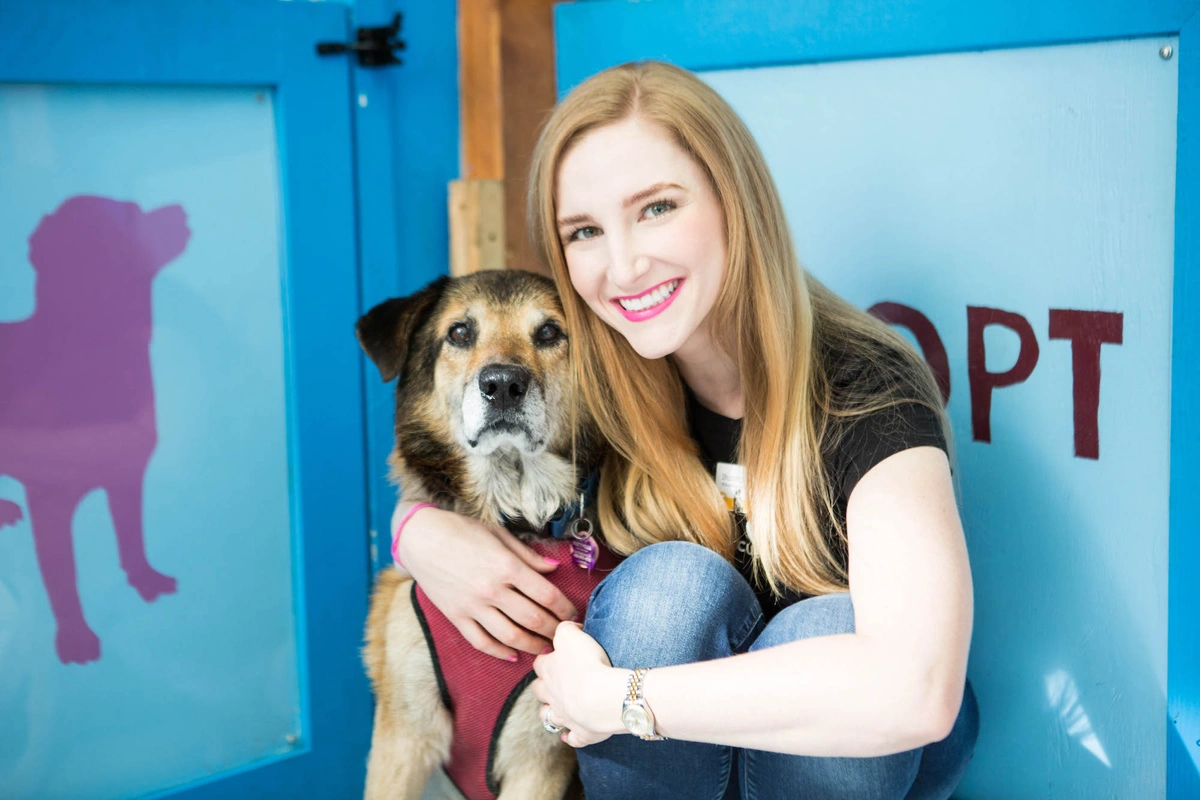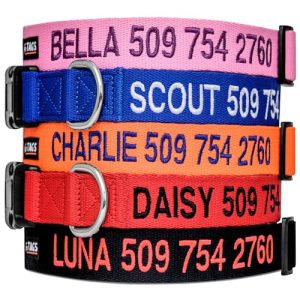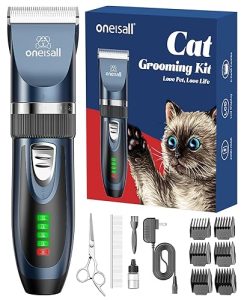Have you ever found yourself wondering how to officially claim ownership of a dog? Whether you’ve just adopted a furry friend or need to update records, knowing the right steps is essential.
Taking ownership isn’t just about having a pet—it’s about securing your rights and responsibilities. In this guide, you’ll discover simple, clear actions to make your dog officially yours. Keep reading to make sure you don’t miss any important details that could save you time and stress.
Your dog deserves the best start with you, and you deserve peace of mind.

Credit: dogbitelaws.com
Verify Existing Ownership
Verifying existing ownership is a crucial step before claiming a dog. This process helps confirm who currently holds legal rights. It reduces confusion and avoids disputes later. Gathering clear evidence of ownership is essential for smooth transfer or claim.
Check Registration Documents
Start by examining the dog’s registration papers. Look for official documents like a pedigree certificate or license. These papers often show the registered owner’s name and contact details. Confirm the information matches the dog in question. Registration proves legal ownership in many areas.
Consult Previous Owners
Speak directly with anyone who owned the dog before. They can provide important details about the dog’s history. Ask about the transfer of ownership and any agreements made. Honest communication may solve ownership questions quickly. Document all conversations for future reference.
Review Veterinary Records
Veterinary records contain owner information tied to the dog’s health. Check for the name and address on these files. These records also show the dog’s medical history, linking it to a specific person. Confirming this data strengthens proof of ownership. Request copies from the vet with proper permission.
Gather Proof Of Ownership
Gathering proof of ownership is essential to claim a dog legally and confidently. Proof shows you are the rightful owner and helps avoid disputes. Collecting key documents and information is the first step in this process.
Collect Adoption Papers
Adoption papers serve as official proof of ownership. These documents include the adoption date and your name as the new owner. Keep these papers safe and accessible. If lost, contact the shelter or rescue for a copy.
Obtain Microchip Information
A microchip links the dog directly to your contact details. Visit a vet or shelter to scan the dog for a chip. Make sure your information is updated in the microchip database. This helps prove ownership quickly and clearly.
Secure Vaccination Records
Vaccination records show responsibility for the dog’s health. These papers have your name and the dog’s ID. Vets provide these records after each visit. Keep these documents to support your ownership claim.
Legal Procedures For Ownership
Claiming legal ownership of a dog involves more than just finding the pet and caring for it. It requires navigating specific legal steps designed to protect both the animal and all parties involved. Understanding these procedures can save you time, avoid conflicts, and ensure that the dog’s best interests are met.
File A Claim With Local Authorities
Start by reporting your claim to local animal control or the municipal shelter. They keep records of found pets and lost dog reports, which can help establish your connection to the dog.
Provide detailed information such as the dog’s description, where and when you found it, and any proof of ownership like microchip registration. This formal step creates an official record that you are asserting your rights over the dog.
Attend Court Hearings If Necessary
Disputes over dog ownership sometimes lead to court hearings. If someone else claims the dog or if the authorities require confirmation, you may need to present your case in front of a judge.
Bring all evidence such as vet records, photos, and witness statements to support your claim. Be prepared to explain why you believe you are the rightful owner and how you have cared for the dog.
Understand Pet Laws In Your Area
Pet ownership laws vary widely depending on your location. Some areas have strict regulations about found pets, mandatory holding periods, or requirements for microchipping and licensing.
Research your local laws by visiting government websites or speaking with an animal law attorney. Knowing your legal rights and responsibilities helps you avoid pitfalls and ensures you follow the correct procedure.
Handling Disputes
Disputes over dog ownership can quickly become stressful and emotional. Handling these conflicts with care is essential to protect your bond with the dog and avoid unnecessary tension. Knowing how to address disagreements calmly and strategically can save you time, money, and heartache.
Negotiate With Other Claimants
Start by talking directly with anyone else who claims ownership. Clear communication helps uncover the facts and may reveal misunderstandings that can be resolved without conflict.
Focus on your shared goal—what’s best for the dog. You might agree on visitation schedules or even joint care arrangements. Keep emotions in check and listen actively to their perspective.
Use Mediation Services
If direct talks stall, consider a neutral third party. Mediators specialize in helping people find common ground and create fair agreements.
This approach is often quicker and less expensive than going to court. Plus, it allows you to maintain some control over the outcome. Have you ever seen a dispute resolved simply by having someone guide the conversation?
Prepare For Possible Legal Action
If all else fails, be ready to protect your rights legally. Gather documents like adoption papers, vet records, and photos that prove your relationship with the dog.
Consult a lawyer experienced in pet custody cases. They can advise you on local laws and the best course of action. Remember, courts focus on the dog’s well-being, so be prepared to demonstrate your commitment to their care.
Update Registration And Records
Updating your dog’s registration and records is a crucial step in claiming ownership. It ensures that all legal documents reflect your name, making it easier to prove ownership in case of disputes. Plus, accurate records help keep your dog safe and make sure you receive important notifications.
Register The Dog In Your Name
Begin by transferring the dog’s registration to your name through your local licensing authority or kennel club. This process usually requires proof of ownership, such as a bill of sale or adoption papers. Don’t delay—registering promptly helps avoid fines and confirms your rights as the owner.
Notify Microchip Database
If your dog has a microchip, update the contact details in the microchip database immediately. This step is vital because lost pets are often reunited with owners through microchip information. Have you ever thought about how often microchip data goes unchecked? Keeping it current can be a lifesaver.
Inform Local Animal Control
Contact your local animal control or municipal office to notify them of the ownership change. They can update their records and help enforce your ownership rights. This notification also aids in recovery if your dog gets lost or is found wandering.

Credit: www.nomnomnow.com
Prevent Future Ownership Issues
Preventing future ownership issues is key to keeping your relationship with your dog smooth and secure. Taking proactive steps helps avoid confusion, disputes, or even losing your dog. Simple habits can make a big difference in proving ownership and protecting your furry friend.
Keep Documentation Updated
Always keep your dog’s ownership papers, adoption certificates, and registration documents current. If you move or change contact details, update these records immediately. Having up-to-date documents makes it easier to prove your claim if questions arise.
I once helped a friend who lost her dog’s paperwork after a move. Because she hadn’t updated the registration, it took weeks to confirm ownership. Don’t let missing paperwork cause unnecessary stress for you or your pet.
Use Identification Tags
Make sure your dog wears an ID tag with your current phone number and address at all times. Tags are the first clue anyone will have to contact you if your dog gets lost. Consider including a microchip as a backup, but tags are visible and immediate.
Think about how quickly you want to be reunited if your dog wanders off. Would you want someone to struggle finding your contact details? An ID tag solves this problem instantly and shows you care about your pet’s safety.
Maintain Regular Vet Visits
Take your dog to the vet regularly and keep records of all visits, vaccinations, and treatments. Veterinary records are strong proof of ownership because they link you directly to your pet’s health history. They also demonstrate ongoing care and responsibility.
One time, a neighbor claimed ownership of a dog because they fed it sometimes. But the vet records showed I had cared for the dog for years. Regular vet visits not only keep your dog healthy—they protect your rights.

Credit: dogbitelaws.com
Frequently Asked Questions
How Do I Prove Dog Ownership?
To prove dog ownership, obtain legal documents like an adoption or purchase agreement. Keep veterinary records and microchip registration updated. Identification tags and photographs can also help. These documents serve as proof in case of disputes.
What Documents Are Needed For Dog Ownership?
Required documents include adoption or purchase papers, veterinary records, and microchip registration. Identification tags and recent photos are also helpful. These documents establish legal ownership and ensure you’re prepared for any disputes or emergencies.
Can I Claim Ownership Of A Stray Dog?
Yes, you can claim ownership of a stray dog. First, check for identification tags or a microchip. If none are found, report the dog to local shelters. After a waiting period, if unclaimed, you may adopt it legally and register as the owner.
How To Transfer Dog Ownership Legally?
To transfer dog ownership, both parties should sign a written agreement. Update the dog’s microchip registration with new ownership details. Notify local authorities and update veterinary records. These steps ensure a smooth and legal transfer process.
Conclusion
Claiming ownership of a dog takes clear steps and patience. Start by gathering all needed documents and proof. Visit local shelters or animal control to check for lost pets. Talk to neighbors or post notices if the dog is found nearby.
Follow legal rules carefully to avoid problems later. Keep your dog’s safety and health in mind throughout. Taking these actions helps you become the rightful owner. Care and responsibility go hand in hand with ownership. Enjoy the bond that grows when you do things the right way.

Emily Barker is the founder of ChillDogLife.com, a space dedicated to helping pup parents discover the best dog products, lifestyle tips, and cozy ideas for happier homes.
A lifelong dog lover, Emily combines her passion for pets with a knack for research to share trusted recommendations on everything from toys and furniture to health and everyday care.
Her goal is simple: to make life easier, stylish, and more joyful for dogs and the people who love them.







